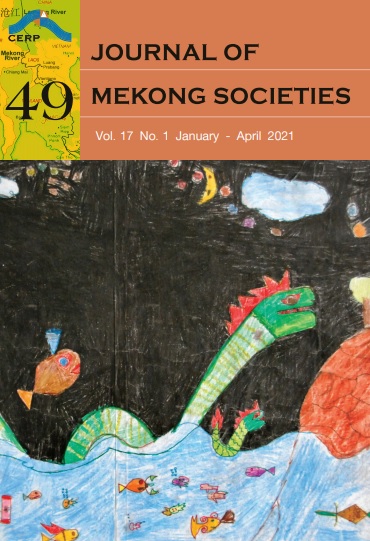An Alternative Model of Inheritance of Folk Belief with Folk Art in the Context of Intangible Cultural Heritage: Case Studies of the Local Deity Patrol in China and the Phi Khon Nam Ceremony in Thailand
Main Article Content
Abstract
This article is based on research examining the development of folk beliefs related to folk art in the context of intangible cultural heritage, while exploring an alternate model of inheritance based on discourse, collective memory, and aesthetics in everyday life. The research was based on two case studies: the local deity patrol in Gao Chun district, Jiangsu province, China; and the Phi Khon Nam celebrations in Tambon Nasao, Chiang Khan district, Loei province, Thailand. Qualitative research methods were used, including participant observation and in-depth interviews from 2016 to 2020 as well as follow-up fieldwork. The research found that folk beliefs as carried by folk art still have great vitality in daily life. This process is carried out through the internal driving force of aesthetic experiences by villagers and folk artisans that include both ethics and pragmatism in transforming collective memory. This is true even if authorized heritage discourse emphasizes only a small portion of intangible cultural heritage, and neglects the integrative relationship between folk beliefs and art carriers and their aesthetic value. Folk belief has been transformed into an aesthetic experience because it has become a dynamic and active existence in the process of modernization, and it deeply embodies the harmony between individuals and collectivity. This alternative conscious inheritance mode by the aesthetics of everyday life operates beyond the safeguarding of intangible cultural heritage at the governmental level.


